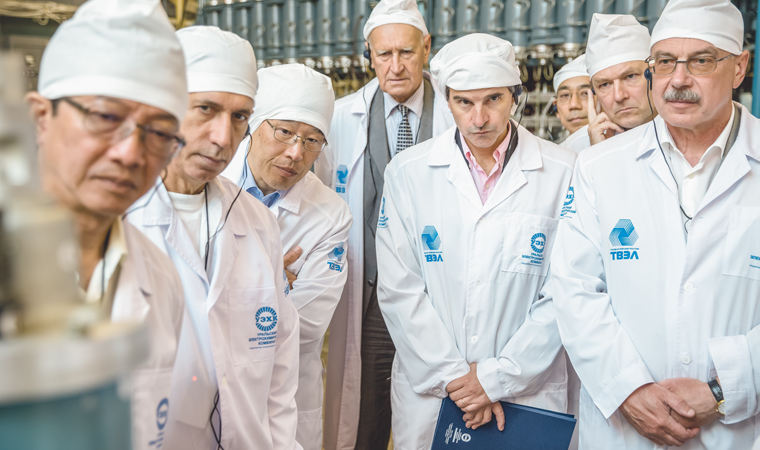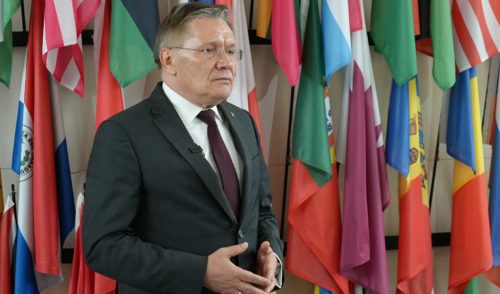
Diplomatic Visit to Rosatom Companies
back to contentsThe visit to nuclear facilities in the Urals was organized to demonstrate Russia’s advanced nuclear technologies ranging from efficient natural uranium enrichment to the use of MOX fuel in fast reactors, which burn up spent fuel from other nuclear stations and close the nuclear fuel cycle.
Urals Electrochemical Plant (UEP) was the first to meet the foreign visitors. They were demonstrated the entire uranium enrichment chain, a core process of Rosatom’s nuclear fuel cycle. According to Mariano Grossi, Permanent Representative of Argentina to International Organizations in Vienna, the delegates saw first-class production facilities at UEP. “We were very much interested to see topnotch facilities and technological advantages gained by Russia and Rosatom over all these years. Rosatom is open to international cooperation,” the diplomat added.
Belgium’s ambassador and permanent representative Willem van de Voorde paid much interest to the report of Alexander Kharichev, Head of Community Relations at Rosatom, who spoke about Rosatom’s efforts to improve local public acceptance of nuclear power. Willem van de Voorde wanted to know how the Russian nuclear corporation secured strong support of nuclear power from local communities. There is no secret, Alexander Kharichev says, one needs talking to people about what the plant does. In other words, one has to be transparent. This is the only way to win the trust. And where there is trust, there is support. Moreover, local communities benefit from nuclear facilities both in social and economic terms.
The foreign visitors were specifically interested in the ability of the new fast reactor to burn high-level long-lived radioactive waste. Another focus of attention was the involvement of Beloyarsk Unit 4 in the weapon-grade plutonium disposition program. Pursuant to the US-Russian agreement, each country has to dispose of 34 tons of plutonium. The delegates were most impressed with the fact that BN-800 is able to cool down even in case of total power outage thanks to a dedicated passive cooling system.
The second day featured a visit to the Beloyarsk nuclear power plant, where the foreign guests were demonstrated how fast neutron reactors were operated and maintained in Russia. The diplomats took a tour round Unit 4 with the world’s most powerful fast neutron reactor BN-800, and Unit 3 with BN-600, a BN-800 predecessor that has been in operation for more than 30 years. When entering the BN-800 reactor building, Valery Shamansky, Deputy Chief Engineer for Safety and Reliability at Beloyarsk, said that Unit 4 was scheduled to begin commercial generation in late September.
As the delegates were in the control room, he mentioned proudly that all the control hardware and software were made in Russia. The turbine plant for Unit 4 was also supplied by a Russian company.
The foreign visitors were specifically interested in the ability of the new fast reactor to burn high-level long-lived radioactive waste. Another focus of attention was the involvement of Beloyarsk Unit 4 in the weapon-grade plutonium disposition program. Pursuant to the US-Russian agreement, each country has to dispose of 34 tons of plutonium. The delegates were most impressed with the fact that BN-800 is able to cool down even in case of total power outage thanks to a dedicated passive cooling system.
When answering a question about the most vivid impression from UEP and Beloyarsk NPP, Juan Carlos Lentijo, Deputy Director General and Head of the IAEA Department of Nuclear Safety and Security, put a premium on people, “I have seen here top-level professionals motivated to develop technologies and caring for safety, which is of paramount importance for me. I have seen excellent relations with the environment, particularly with people from neighboring settlements. I was impressed with close contacts between companies, employees and local communities.”




